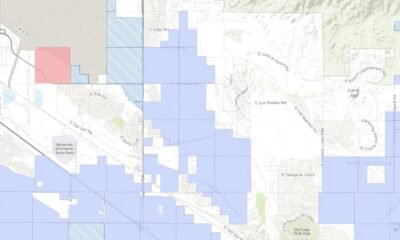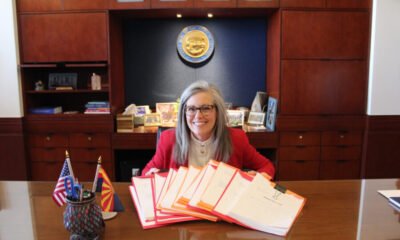Entertainment
Native American Health Crisis Worsens Due to Data Gaps

Public health decision-making in Native American communities faces significant challenges due to restricted access to critical data from state and federal agencies. Since the reauthorization of the Indian Health Care Improvement Act in 2010, tribal epidemiology centers have struggled to obtain essential health information despite their established authority.
Tribal epidemiologists have repeatedly highlighted the difficulty of accessing accurate and timely data. By July 2020, American Indians and Alaskan Natives were experiencing COVID-19 infection rates 3½ times higher than non-Hispanic whites. The issue of data access existed before the pandemic but has since become more pressing.
During the pandemic, tribal health officials faced hurdles in disease outbreak responses, including for COVID-19 and ongoing syphilis outbreaks. Meghan Curry O’Connell, chief public health officer for the Great Plains Tribal Leaders’ Health Board, described the situation as being “blinded” by lack of data. Although data-sharing has improved slightly, it remains insufficient.
Federal investigations reveal numerous obstacles, such as confusion over data-sharing policies and inconsistent request processes. Tribes and tribal epidemiology centers often encounter poor-quality or outdated data and strict privacy rules. This makes it hard to address historical health disparities, with life expectancy among American Indians and Alaskan Natives being at least 5½ years shorter than the national average.
Sarah Shewbrooks of the Great Plains Tribal Epidemiology Center noted the significant time and effort required to collect data during COVID-19. Her team had to manually track cases across multiple states, detracting from their ability to save lives in their communities. Despite the tribes’ proactive measures, they lacked real-time data to inform their decisions.
Contact tracing efforts also suffered due to inadequate data. Shewbrooks emphasized the importance of having community members lead contact tracing initiatives, as state workers’ reliance on calls and texts often failed to engage tribal populations. Many cases went unresolved as state workers moved on without responses.
In 2022, the Government Accountability Office (GAO) confirmed tribal health officials’ concerns. The GAO report noted that many tribal epidemiology centers lacked access to complete CDC COVID data. Centers that did obtain data often had to use complicated processes, like Freedom of Information Act requests.
The GAO recommended several improvements, which the Department of Health and Human Services (HHS) agreed to implement. HHS published a draft policy to clarify data access for tribal epidemiology centers after consulting with tribal leaders. However, tribal leaders argue it doesn’t go far enough and should include tribes’ rights to their data as sovereign nations.
Developing stronger federal policies could also improve state-level data-sharing relationships. Tribes often face worse issues at the state level, where laws may not recognize them as authorities. For example, the Northwest Tribal Epidemiology Center established data-use agreements with Washington and Oregon, which facilitated near real-time access to critical health data during the pandemic.
Despite some progress, concerns about data quality persist. Sujata Joshi, director of the Northwest center’s Improving Data and Enhancing Access project, reported delays in obtaining CDC and HHS data. Even after receiving it, the quality of the data remained an issue.


















